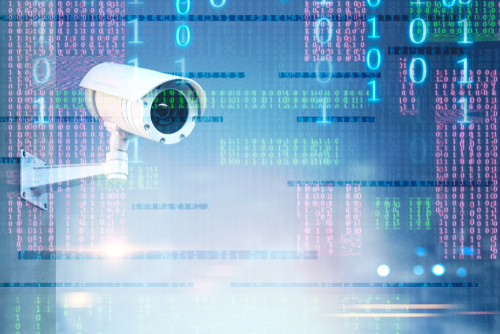For organizations of any size to reliably protect people, property, and valuable information from malicious actors, stakeholders must develop and implement bespoke security systems. While several components come together to form effective security solutions, some devices and technologies offer operators and staff enhanced capabilities in terms of threat detection.

With almost 30% of American businesses seeing an increase in physical security incidents in recent years, the popularity and necessity of well-managed and easily monitored business surveillance systems is growing. This statement is backed by data suggesting as many as 70% of organizations plan to increase their spending on physical security solutions in 2025.
But what do advanced security systems look like in the modern world? This article examines the future of business surveillance through four innovative security camera solutions.
1. Cloud-Based Management
Cloud adoption figures among commercial organizations have been steadily increasing for several years, with as many as 94% of companies globally believed to use some form of cloud services. The ability to store, access, and adjust data from within a remote-accessible platform benefits businesses in a number of ways, but arguably the most impactful use of cloud-based management platforms lies in the realm of commercial surveillance solutions.
By connecting different types of security cameras across various business-owned sites to a centralized observation and management platform, security teams and business owners can ensure key assets are well-monitored at all times. Custom alerts can be communicated to staff warning of suspicious activity 24/7, with feeds accessible from any secure smart device.
The other key benefit to the adoption of cloud-based surveillance systems is that businesses can reduce their need for physical security infrastructure, with live and historic data stored on off-site digital platforms rather than in costly physical servers. This can also positively impact scalability by lessening the infrastructural impact associated with security system growth.
2. AI Video Analytics
Artificial intelligence (AI) video analytics solutions work hand-in-hand with cloud management platforms, with both technologies enhancing each other’s capabilities. One of the major benefits of cloud-based security management is the ability to send instant alerts to security personnel remotely 24/7, and with the addition of AI analytics tools, the specificity of these alerts can be greatly enhanced.
Supported by advanced algorithms, modern AI video analytics tools are able to continuously analyze live footage for signs of anomalous events associated with various common threats. For example, cameras imbued with AI can autonomously spot contraband items, suspicious motion, and crowds forming in unusual areas, as well as anomalous or dangerous behaviors.
Security staff can be instantly warned of these threats and provided access to live feeds via cloud-based communications to measurably improve the efficacy of incident responses. With AI tools becoming more advanced each year, it’s no surprise as many as 90% of chief security officers believe AI will significantly impact security operations over the next five years.
3. Internet of Things (IoT) Integrations
IoT devices analyze live information about their immediate environment that can be used to inform the operation of wider security devices. Different types of IoT sensors can be linked to video surveillance systems, with collected data used to trigger various threat responses. For example, if noise sensors detect sounds consistent with a break-in, connected cameras can be instructed to record and flag footage of the event to be sent to admins for instant analysis.
The development of bespoke IoT integrations supports security staff in enhancing situational awareness, enabling on-site and remote teams to enact intelligent and adaptive responses to a multitude of security threats. IoT integrations can also improve safety measures via air quality monitoring and temperature analysis, benefiting security staff in numerous vital ways.
The number of connected IoT devices in operation across the globe has grown steadily for several years, with recently published figures suggesting 18.8 billion devices will be active by the end of 2024. Given the synergy between IoT sensors, AI analytics tools, and cloud-based management systems, adoption rates in the security sector will likely rise in the near future.
4. Cybersecurity Provisions
For the above-mentioned innovations in security camera technologies to function safely, it’s important to equally consider developments in cybersecurity provisions. Modern surveillance systems rely on fast and secure communications between external devices, cameras, and monitoring systems to reliably address threats, exposing potential attack vectors to hackers.
Robust cybersecurity measures are essential to the effective operation of modern security cameras, with admins required to continuously review and update the software they use to prevent unauthorized access to sensitive data. Encryption, endpoint detection and response, digital access control, and policies of zero trust are all key to secure surveillance operations.
Conclusion
Reliable, responsive, and easily managed surveillance systems are essential to the safe operation of modern businesses, providing security staff the ability to detect and address common threats with prompt efficiency. Modern innovations in security camera solutions, including cloud management platforms, AI video analytics, IoT devices, and cybersecurity provisions, enable organizations to best ensure the protection of people, assets, and data.
Howie Robleza is a freelance writer interested in tech, legal, and property trends. When she’s not writing, she works in commercial property management.
